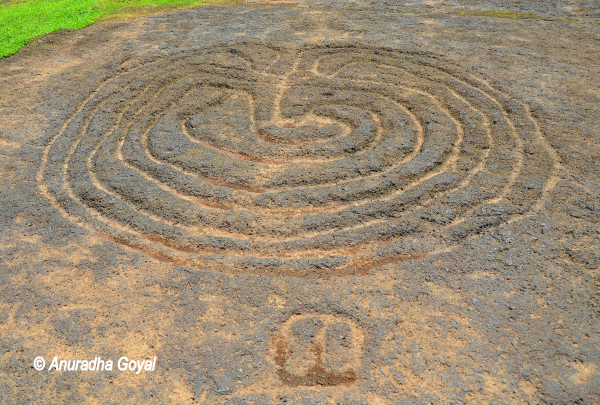
I came to know about these rock art carvings at the Goa State Museum and had put it on my to be visited list, but it was an article in the newspaper with pictures of this rock art that made me get up and drive down to this rock by the river Sharawati and admire them first hand. It is a long drive from Panaji - good 70+ kms in the southeast direction. We were thankfully staying at Arco Iris and the drive was about 30 kms from there, but since we were searching for this it took us almost an hour to reach the place. Till the village of Rivona and Colomb, we could follow a straight road when a small hand painted board on the right directed us to take a right turn. After this we were on a road that was not kuchha but it was not pucca either. After following some fallen ASI boards we reached a dead end and all we could see was a small rivulet and a thatched hut there. We got down and a man in tomato red T-shirt stepped out wearing a welcome smile almost like the one you expect from a cast away when he gets to see a human being after a long time. He was the ASI guard for the site and we crossed his office cum hut to reach the huge rock, where his own cloths were spread out to dry.
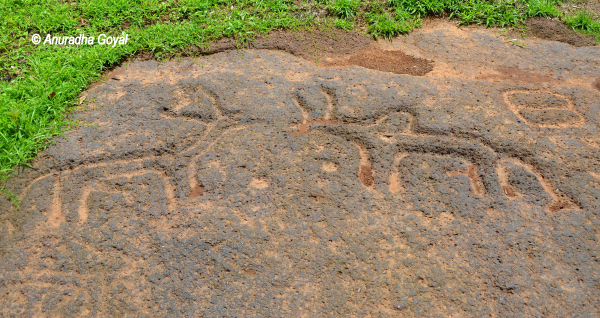
He enthusiastically started showing us the carvings, some of which were not very visible so he drew an outline with the water to make it stand out. He started with a set of three carvings that depict the human birth. A sperm, a placenta and a lady just after she has given birth. This can be easily linked to pre-historic mother figure or the fertility cult. This was followed by a dancing figure balanced on one leg making me think if this could be the earliest version of Nataraja. There were numerous carvings of humped bull and a few deers and one peacock that we could see. There were many types of hunting equipments and animal traps carved out. A pair of feet accompanied most prominent figures. There is one place with three feet carved together and another with two giant feet carved together. There are many figures that you cannot make out. A part of the rock has a lot of carvings that are confusing to an untrained eye.
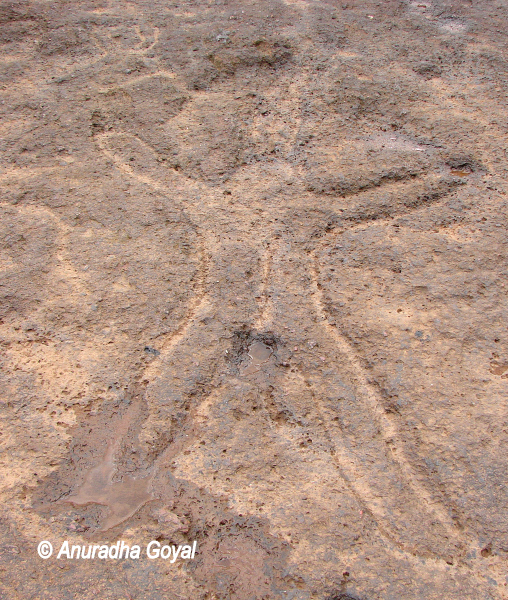
Most curious carving is a labyrinth about meter or so in radius that is so well carved that you wonder what would be the purpose of this. Among all the petroglyphs, this one stands out the most. Some reading on the Internet tells me that it is potentially the oldest known representation of a labyrinth. Similar carvings have been found around the world and many of them have been found in India including some on the temple carvings but all of them probably are from a period later than this one. ASI guide said many people from nearby villages come and offer milk on this labyrinth and some of them even sit on top of it and meditate.
Backdrop of the rock is the shallow Sharawati flowing on a bed of colorful pebbles and rich green tall trees – providing a perfect contrast for the rusty tinge of the laterite stone.
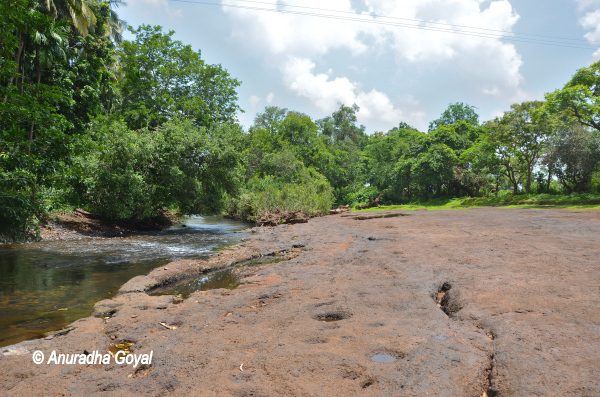
What makes this place even more unique is that such carvings exist in South India on granite stone and in central India on sandstone, but this is the only place where they have been found on the hard and iron-rich laterite stone. The deep engravings in precise formations also indicate the presence of appropriate sharp equipment to carve. I am not an archeologist, but to my knowledge these are the only carvings that are not on walls but on a horizontal surface akin to having carvings on the floor. The site has existed in open area for ages and gets submerged in the waters of the river during monsoons. I am not sure if anything can be done to preserve this precious heritage, but the least that can be done is to have some brochures printed or boards displayed so that visitors can make some head and tail of the carvings and know about them from authentic sources.
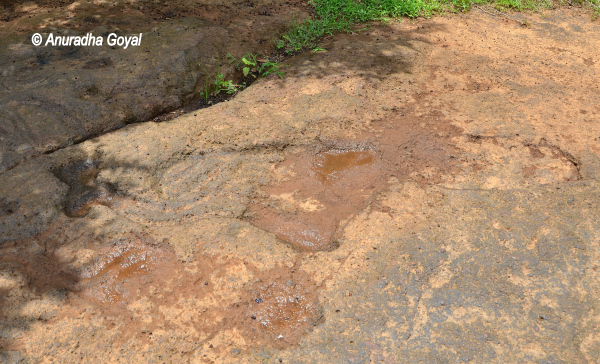
I was told that Nand Kumar Kamat of ASI discovered this place in 1984. Discovery basically involved removing lots of mud and cleaning the rock. Apparently a round of cleaning is done after every monsoon now. Archeologists believe these carvings can be anywhere around 8000 - 9000 years old belonging to Mesolithic period. Technically the place is called Pansoimol or Usgalimol, but I did not find a board using any of these names. It seems there are more such rocks in this area but there was no way for me to find out where. While driving back from the rock, I realized I might be driving on some of the petroglyphs. Some distance ahead there was a huge cut in the rock creating a kind of artificial lake that had emerald green water – looking beautiful, but probably a result of mining in the area.
If pre-history or rock-art interests you, this is a must visit place in Goa.






0 comments:
Post a Comment